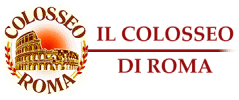1. Dimensions… colossal
The Colosseum is an elliptical building 189 meters long (100 meters less than the Costa Concordia, ed) and 156 meters wide, on an area of 24,000 square meters with a height of more than 48 meters. It has about 80 entrances and could accommodate around 50,000 spectators.
2. Work on the run.
It took just over 5 years to build it: from 75 to 80 AD. More than 100,000 cubic meters of travertine were used for the external wall alone.
3. A name, a mystery.
At first it was called the Flavian Amphitheater (it was built by Vespasian and Titus of the Flavian dynasty, ed). The name “Colosseum” only arrived in the Middle Ages: the most accredited theory is that it is called this because it was built near the statue of the “colossus” of Nero which stood a few meters from the amphitheater. Others say that it derives from the position, because it would rise on a hill where a temple of Isis once stood (hence Collis Isei). But there is also a black legend according to which in ancient times it was a pagan temple, where the devil was worshipped. And at the end of each ceremony the priests asked the followers: “Colis Eum?” (“Do you adore him?”).
4. Without the Colosseum there wouldn't be many historic buildings.
The marble of the facade and of some internal parts of the Colosseum were used for the construction of St. Peter’s Basilica and also for civil buildings such as Palazzo Barberini. Fallen into abandonment, for a long time the amphitheater was in fact used as a source of building materials. So until the 18th century, when the love for the ancient remains of Rome returned. It is estimated that over time only a third of what was the original construction has remained.
5. Historical film? Nope, horror.
At the time of the gladiators, the Colosseum gained a sinister reputation, to the point of being considered one of the 7 gates of hell (tens of thousands of people died there). It is said that propitiatory rites were held on site, using the same blood of the dead in the arena. In the Middle Ages, then, bands of brigands used it to bury their victims. In the Middle Ages, then, bands of brigands used it to bury their victims.
6. It's a bit like the jungle.
Strange but true: for several centuries, botanist experts have been studying the flora that grew spontaneously inside the Colosseum. More than 350 different species of plants have taken root in the ruins, some of which are of exotic origin and whose growth would be favored by the microclimate of the amphitheater.
7. It was also used as a swimming pool.
The nauromachie were also held inside for a period, representations of naval battles in the water which, however, did not have the same success as the games with the gladiators. According to Martin Crapper, a lecturer in civil and environmental engineering at the University of Edinburgh, the water flowed through a series of internal wells and pipes underneath the grandstands. About 7 hours were needed to fill the whole arena.
8. …And covered by a large solar tent.
On sunny days, the Colosseum was covered by a veil made up of about 80 triangular sails, controlled by 320 support ropes. The reason is easy to understand: to avoid sunstroke to the spectators during the midday shows.
9. At the cinema.
It has been the set of numerous films. But the film that celebrated its worldwide fame was not shot at the Colosseum: Gladiator. In fact, a series of hitches prompted director Ridley Scott to shoot some scenes in the Roman amphitheater of El Jem in Tunisia and to rebuild one in Malta, where it was completed in 19 weeks and only in part: the bulk was recreated on the computer.
10. New, indeed old, look.
At the end of September the preparation phase should be completed and the restoration of the facade of the Colosseum will be able to begin which, once cleaned of the smog, will return to the shining white of the travertine. The estimated cost of the operation, sponsored by Tod’s, is 25 million euros.
